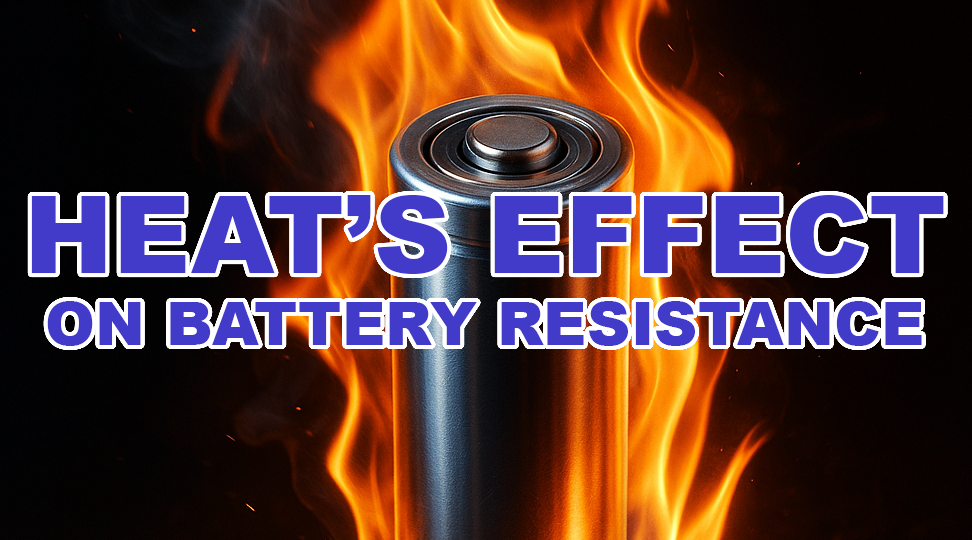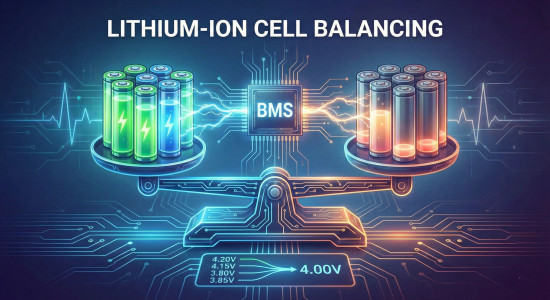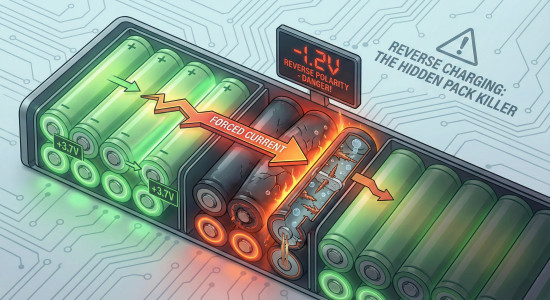
Why Lithium-Ion Batteries Have a Negative Temperature Coefficient
Table of Contents
As most things increase in temperature, they also increase in resistance. And if current is flowing through a conductor, its resistance directly governs how much voltage is going to drop across that conductor. The amount of voltage drop across the conductor governs how many watts of power are lost within the conductor as waste heat. That heat, in turn, causes the conductor's resistance to increase more, at which point it has more voltage drop, at which point it produces more watts of heat loss, and so on. The death cycle continues.
Most things work that way. That is called having a negative temperature coefficient. But there are some things that do not do that. In fact, there are some things that do the exact opposite of that. And you know what that is called? You guessed it. That is called having a negative temperature coefficient.
PTC vs NTC at a Glance
Metals are usually PTC. Semiconductors, electrolytes, and many ionic conductors are NTC. NTC, or negative temperature coefficient, materials generally behave like this: as temperature rises, the carrier mobility and availability rise and resistance falls.
The Funny Thing About Lithium Ion Batteries
This article today is about how lithium ion battery cells actually have a negative temperature coefficient. There is this funny thing about lithium ion batteries: their resistance actually decreases as they get hotter. It is one of the weird, rare things that actually does that.
Why Lithium Ion Cells Show NTC Behavior
Inside of a cell, there is a dominant resistance under load that is ionic and electrochemical. It is not metallic. As the electrolyte gets warmer, it has a lower viscosity, which results in higher ion mobility. This results in faster charge transfer kinetics at the electrodes, which results in a lower interfacial impedance. The net result of this situation is that, in the normal operating band of a lithium ion battery, which covers its entire operational temperature range, as it gets hotter, its internal resistance decreases.
What This Means Under Load
For any given current, the lower the resistance, you will get a lower voltage drop, which gives you lower power losses and less self heating from conduction. Voltage sag improves at higher temperatures, so performance looks better warm than cold. That is why batteries work better after they warm up. This also produces a naturally stabilizing effect against thermal runaway by suppressing the I squared R heating.
Limitations and Caveats
But there are some limitations and caveats. The NTC situation does not completely cancel out the chemistry. At high temperatures, there are parasitic reactions that accelerate. Gas is generated, and there is plating that can happen on the SCI conductors, causing SCI growth and venting. Thermal runaway is something that is driven by exothermic reactions, not all the losses. Once certain temperatures are achieved, and those thresholds are crossed, there is no turning back. This, of course, all depends on the state of charge and the health of the battery.
Low State of Charge Behavior
As voltage drops toward the end of state of charge, the resistance increases dramatically, which will increase voltage drop, which will cause more heat loss, which will cause a runaway chain reaction.
Key Ideas Without Symbols
- Ohms Law stated in words: voltage equals current times resistance.
- Conductive heating stated in words: power loss equals current squared times resistance.
- Lower resistance at higher temperature means lower voltage drop for a given current and lower self heating.
Practical Implications
- Cold packs show more voltage sag and feel weak until they warm up.
- Warm (but within safe limits) packs have less internal resistance and deliver better performance.
- Cell health and state of charge still dominate safety and longevity.
Design and Use Notes
- Battery management systems account for temperature to predict voltage sag and power limits.
- Packs should be kept within their recommended operating temperature range for both performance and life.
- Do not rely on NTC behavior to prevent thermal runaway. Chemical side reactions can still take over at high temperatures.
Bottom Line
While it is not good for the long term health of the cells, and over a long period of time will cause the cell to actually have a higher resistance and produce more heat, while a healthy cell is hot it will have a lower voltage drop, a lower resistance, a lower power loss to heat, and perform better when it is hot.


